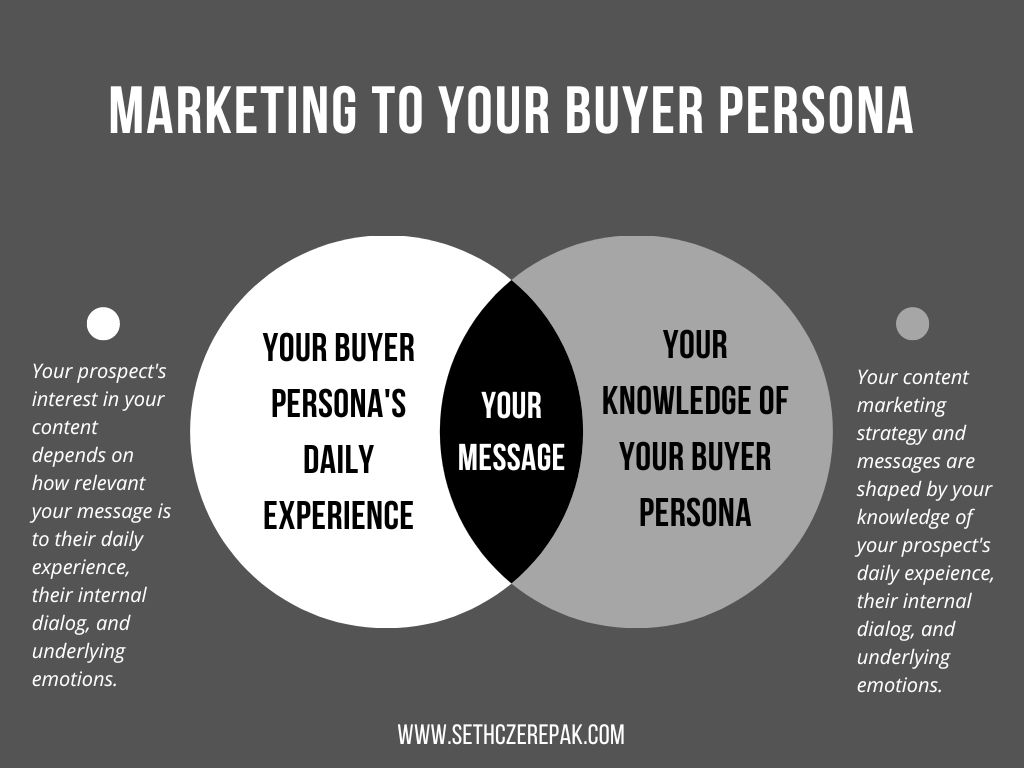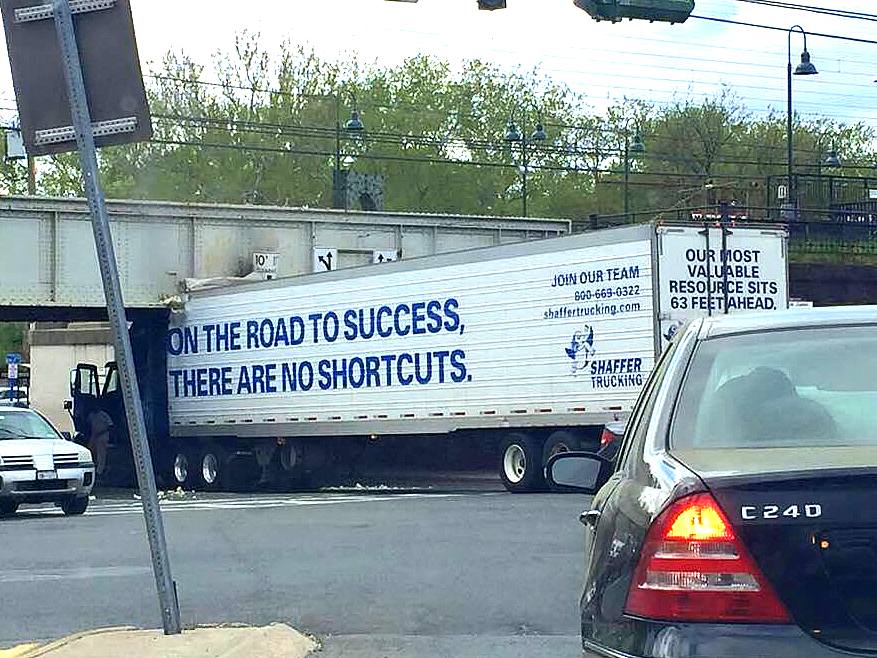Technique #4: Rapport in Copywriting
Article #4 from the series, 10 Persuasive Copywriting Techniques
Topics Covered in This Article
Rapport in Copywriting
If relevance is how you connect with your reader, and curiosity is how you turn that connection into interest, and hope is how you turn that interest into desire, rapport is how you turn that desire into motivation.
(If this progression ^ doesn’t make sense, check out the introduction to this course on persuasive copywriting techniques). Before I reveal the secret to building rapport in copywriting, you should know that motivation isn’t enough to get your reader to act now.

That takes urgency. This is why the final technique in this course focuses on urgency. For now, our job is to answer the question that’s on every reader’s mind when they see your message:
“Who is this person and why should I listen to them?”
Ultimately, we want our readers to see us as someone they can trust. When our readers trust us, it dissolves the fear barriers that would otherwise cause them to doubt our message. We do this by building rapport. The dictionary defines rapport as a relationship of “mutual trust or emotional affinity.”
This definition contains the simple secret to building rapport in copywriting, “emotional affinity” being the key term. Affinity is an inherent likeness or agreement; close resemblance or connection.
In other words, if you meet someone who shares your interests and values, you have an affinity with that person. If their speech patterns and emotional reactions are similar to yours, you have a lot of affinity with them. Here’s the mind-blowing secret about the link between affinity, trust, and rapport.
The Role of Rapport in Copywriting
People trust people who are like them. This is not speculation. Contrary to what most of us believe, human beings don’t generally each other based on logical reasons. That includes people who insist that they are the exception to this rule. Scientists call this the “mere liking effect” and it’s been verified by plenty of scientific research.
The first part of the study (linked above) had participants taking a test on major political issues. They were asked their opinions on social and political issues, including abortion, gay marriage, and a theoretical government jobs program.
After answering these questions, the subjects were provided with a form supposedly filled out by another person. These forms had actually been filled out by a computer and made to agree or disagree (to varying degrees) with the responses given by the subject.

The participants were then asked their impression of the “person” who had filled out the form. They were specifically asked whether they found the person moral, competent, or trustworthy. The questions were based on hypothetical scenarios such as whether the other person would return a lost wallet to its owner. Their responses revealed that the subjects found people who shared their views to be more moral, competent, and trustworthy.
The study conducted three more tests. The second test introduced a control group that only had a picture to go on. The control group’s answers were then compared to those who were provided with the other person’s test results. The third test connected the results of the previous tests to another sociological phenomenon called the “mere-exposure effect.” This third test showed that the subject’s opinions about how moral, trustworthy, or competent improves as we see a certain person (or personality/character traits) more frequently.
The final was a computer image of an actor whose mannerisms mimicked the facial expressions of the test subjects as they were taking a quiz about emotions which involved them making faces. The subjects ranked the actor to be more trustworthy and moral when the actor’s facial expressions mimicked theirs, and less so when the actor. The mimicry did not affect their perception of the actor’s competence, but the results of this study (and others like it) reveal a mind-boggling connection between perceived affinity and perceived trust.
In every test, the subjects concluded that people most similar to them were more moral, more trustworthy, and (in some of the tests) more competent. The study also revealed that the subjects liked the people whom they believed to be similar to them. Every stage of this study (and many others like it) validates the link between perceived affinity and trust.
The bottom line, we like people who we believe are similar to us. We also find them to be more moral and trustworthy. This is how we answer the question that’s on every reader’s mind when they see your message:
“Who is this person and why should I listen to them?”
The best answer to this question is:
“This is someone like you.“
That’s the simple secret to building rapport in copywriting. Show your reader the affinity between them and you, or between them and your previous clients (or both). Do this, and your reader will see you as a moral and competent person who they can trust. Now let’s look at some examples of building rapport in copywriting.
Examples of Rapport in Copywriting
The first four persuasive copywriting techniques in this series form the foundation of good copywriting. They also build on one another. In the previous article, we talked about two types of hope in copywriting. The following examples build on what we’ve covered so far by converting hope into motivation. First, let me cover a couple of points about building rapport in copywriting.
First, you can’t use this technique without the information gathered during your Buyer Persona Exercise. This is why I’ve been hammering this point over the past three articles in this series. Again, building rapport in copywriting is all about creating the perception of affinity. Your reader needs to see, for themselves, that either you (assuming you’re the seller of your product or service) or your clients have an affinity with them. This means similar desires, hopes, fears, struggles, and life experiences.
If you want to go deeper (which I suggest you do), you can include similar interests and other demographic details. If you’re creating a new product and you don’t have much (or anything) in common with your reader, that’s okay. In the examples below, I use a story to create affinity between my reader and a “hero” who once struggled with the same problem as my reader.
Rapport in Copywriting: Example #1
Let’s continue with our previous example of the young amateur bodybuilder who wants to gain twenty pounds of lean muscle. Once again, I’ll use [BRACKETS] to show you where I’ve applied the techniques we’ve covered so far in this series. I’m including the entire example for context, but you’ll find the rapport section under the second sub-header:
How I Went from Being a Hard-gainer to One of the Biggest Guys at My Gym
[RELEVANCE >] I once idolized the big guys at my gym. They’d stroll in with Jason Momoan pecs, delts like football helmets, and rippling biceps with garden hose veins. I’d just stare in boiling envy.
“That guy’s got to be on the juice!” [< RELEVANCE].
Five years of killing myself at the gym and eating like a horse. Just to gain a whopping ten pounds.
[HOPE >] Today, I’m one of the biggest guys at my gym. Now the big guys stare when I take off my shirt. I get comments and questions from skinny guys…
“What bicep exercises do you do?”
“What supplements do you take?”
“What’s your chest routine?” [< HOPE]
Think this can’t happen to you too? You won’t for long. [CURIOSITY >] Here’s the first thing you need to know about getting big… [< CURIOSITY]
You and I Didn’t Win the genetic lottery
[RAPPORT >]Like you, I didn’t win the genetic lottery. I was “the skinny guy” in gym class. I was embarrassed to take off my shirt. In High School, I missed out on a lot of dates with girls. I missed trips to the beach with my friends.
Since I was ten, all I wanted to do was lift weights, get big, and stop being the skinny guy.
I still remember the “new car” smell of my first weight set. I used to wake up in the middle of the night, go out to the garage, and just stare at those shiny plates. The steely Olympic barbell cool to my touch. I couldn’t wait to get home from school the next day. I just wanted to pump iron, eat protein, and watch my bird chest and pencil arms transform into rippling slabs of lean, sleeve-busting muscle.
At first, my gains exploded. I was confident when taking off my shirt. I started getting attention from girls. Still, I was puzzled at those guys who blew past me in their gains. I lifted all summer. I sweated for hours in my garage, five, six, seven days a week. Not these guys. They’d take entire months off. Still, they were getting bigger and more ripped than me. I remember looking at them and thinking..
“Are these guys on drugs or something?”
“Do they just have better equipment than me?”
“Maybe I’ll hit a late growth spurt.”
I was stumped. I had to push, pull, kick, bite, spit, sweat, and bleed for every ounce of my gains. This blood-boiling struggle continued into my late twenties. [< RAPPORT] [CURIOSITY] Then I stumbled onto a sobering secret every hard-gainer needs to know… [< CURIOSITY].
(NOTE: The example above is relevant to Buyer’s Journey Stage #2)
There’s a TON of rapport building in this example, but it’s easy to miss if you’re new to this technique. The first example is in the sub-header, where we say:
You And I Didn’t Win The Genetic Lottery
Notice my use of the phrase “You And I,” followed by the first sentence that starts with the words “Like you.” Then, I move immediately into a story that should (If I’ve done my buyer’s persona research properly) sound painfully familiar, and even nostalgic to my reader. Assuming I’ve hit the nail on the head with this story, my reader will read this and think:
“This sounds like my life.”
Read the example again, and notice how I use these phrases:
- I was always “the skinny guy” in gym class.
- I was embarrassed to take off my shirt.
- I missed out on a lot of dates with girls.
- I missed trips to the beach with my friends.
- I still remember the “new car” smell of my first weight set.
Notice the vignette (miniature story) I include about my hero waking up in the middle of the night to go out to the garage and admire his weight set. Notice my use of Dog Whistle Language when I use terms like “pump iron,” “bird chest,” “pencil arms,” “blew past me in their gains,” “more ripped than me,” and (again) “hard-gainer.” Notice the three pieces of internal dialog I include before the final paragraph in this example.
Every time I season my message with one of these familiar terms, experiences, or pieces of inner dialog (aka, Semantic Relevance), I fortify the bond between my reader and the hero of my story. By the time they hit the second appeal to curiosity (at the end), my reader should feel like he’s met a kindred soul. Most importantly, the more my reader identifies with the hero of my story, the more hope he’ll have that my story holds the answer he’s been so desperately seeking. Keep all of this in mind as we examine our second example.
Rapport in Copywriting: Example #2
Let’s build on our previous example of a mom in their mid-thirties who wants to lose the weight gained during her second or pregnancy. Once again, I’m including the entire example for context, but you’ll find the rapport section under the second sub-header:
“I Just Wanted to Be a Size Eight Again.”
[HOPE >] “It feels so good to wear these jeans again,” said Nellie, pulling a pair of denim jeans from her closet. “I’m glad I stopped those fad diets. I’m so much happier now.”
If you’re a mom of two or three kids who is tired of fad diets and just wants to feel good again, you’ll be inspired by Nellie’s story. One year ago, she was a size 14′. Today, she’s a size 7′, and happier than ever. [< HOPE]
[RELEVANCE >] “I tried every diet and workout.” said Nellie. “I was tired of starving myself and feeling guilty about eating a piece of cheesecake. [< RELEVANCE] [CURIOSITY >] When I learned why all that wasn’t working, my whole life changed. [< CURIOSITY] [HOPE >] Now I can eat dessert without feeling bad.” [< HOPE]
What made Your Second Pregnancy So Different?
[RAPPORT >] Your second pregnancy was different. You showed sooner. You were more tired. You had more aches and pains, more Braxton Hicks contractions and, while your labor was shorter, your pains were worse.
Worst of all…you still can’t lose the weight.
If this sounds familiar, you’re not alone. Most women don’t know why their second pregnancy has a slower recovery. Nellie didn’t either. [< RAPPORT] She had tried every diet, supplement and exercise program. Nothing worked, and she was about to give up.
That’s when she learned that the problem was lurking in her immune system.
“If you have a mildly inflamed system (signs of headache, weight gain, stuffy nose) you may be able to resolve your condition by making just a few adjustments to your daily habits,” says Patricia Ladis, a renowned NYC physical therapist and co-author of The Wise Woman’s Guide To Your Healthiest Pregnancy. “If you see no change in some of your symptoms or you have difficulty losing weight, then you should consult with a doctor, preferably a functional medicine doctor.”
[RAPPORT >]“I couldn’t afford to see a functional medicine doctor,” said Nellie. “My husband and I make less than $50,000 a year and we have a toddler and young baby. I started doing research, and was shocked at what I learned next.”[< RAPPORT]
(NOTE: The example above is relevant to Buyer’s Journey Stage #2)
Again, this example is loaded with subtle rapport-building language. First, notice that I’m focusing on this being her second pregnancy. Clearly, my product is making a special appeal to women who are on their second pregnancy. If I wanted to target new moms with the same product, I’d create another message, and possibly even a second version of the product, to appeal to that demographic.
Notice how I then zero in on experiences common to a second pregnancy. I then tie these back to the star of my story, just before giving my first clue about the solution to my reader’s problem (more on this later). I then build more rapport with the final paragraph, where I identify with my reader’s marital status, family size, and income range. Again, every time I season my message with one of these familiar terms, experiences, or pieces of inner dialog, I fortify the bond between my reader and the star of my story.
That’s all there is to building rapport in copywriting. It’s tempting to think that this is an irrational way to build trust, but we’ve already talked about the scientific link between perceived affinity and perceived trust. Later in this course, I’ll share scientific proof that the conscious reasons people give for their decisions are often irrational and even untrue.
The bottom line is that our brains are goal-seeking mechanisms. They learn by association and can make false associations with stunning efficiency. They also often value speed over accuracy. This is true for everyone, including people who think they are the exception. Likability is one of the mental shortcuts the human brain uses to decide who to trust, and how much. The secret to building rapport in copywriting is to use this shortcut as a route into your reader’s mind.
How to Apply Rapport in Copywriting
The smartest way to master rapport in copywriting is with the information you gathered using your Buyer Persona exercise. I covered this exercise in the first and third articles in this series. Once you have this information, rapport building can be simple, or complex, depending on how many of the following data groups you work into your copywriting message:
Data Groups for Building Rapport
If you’re overwhelmed by this list, don’t worry. I’m only including all four data groups to show you the full scope of possibilities for building rapport in copywriting. If you’re new to this idea, start with the demographic data for now and stick with that until it’s second nature to work it into your message. The better you get using demographic data in your messages, the easier it will be to add psychographic data and Dog Whistle Language.
As for your reader’s Stage of Awareness, don’t worry about that data group for now. That’s a Ph.D. level copywriting concept that I deal with in my Buyer Persona vs Customer Journey article and content marketing tutorials. The better you get at weaving demographic data into your message, the easier it will be to add the remaining three data groups.
If it feels awkward working these details into your message, leave them out of your first draft and add them during your content editing process. The secret to building rapport in copywriting is to be subtle and make it sound natural. If your reader gets the sense that you’re not being genuine or authentic, they WILL dismiss your message as being awkward or phony. That said, there are three types of affinity you can focus on when adding this “seasoning” to your copywriting messages.
#1: Affinity With The Seller (or Writer)
This is where you emphasize the affinity between your reader and the person selling your product or service. This only works if the affinity between your buyer and your seller is real. If the service provider or product creator doesn’t fit the profile of your buyer’s persona, you’ll have to use one of the other two approaches.
Either way, I recommend that you find as much common ground as possible between your seller and your reader, and use this in your message. For example, your seller might have created the product or founded their company based on values or interests they share with your reader. Work these into your message.
#2: Affinity With Your Clients/Customers
This is where you emphasize the affinity between your reader and the other people who have bought your product or service. This is a powerful approach for a few reasons.
First, it bypasses what I call the expert intimidation factor. If your seller (service provider or product creator) is an expert, or is higher up the mountain of success than your reader, or is perceived to have some advantage that your reader doesn’t, your reader might secretly fear that the product/service won’t work for “someone like them.”
This is a very real fear that I’ve seen sink entire marketing campaigns. In fact, when I was a business coach, I had a consultation with a sales manager whose team had been in a sales slump for months. After some rigorous questioning, I discovered that the slump started just after my client had held a part for her sales staff at her house. Her house was worth a few million dollars and sat on ten acres of land with a waterfront view.
I suspected that her team had secretly envied their manager’s success and had thus lost their motivation to “keep making her rich.” I helped her put together an employee survey to uncover whether this was the case. The results were undeniable. Her sales team had not been inspired by their trip to her house. Many of them were jealous or intimidated to see her success. She ended up losing several team members. The others only came around after a lot of work in rebuilding trust and rapport.
This is why I suggest people use client and customer testimonials to supplement their personal story about their own success or expertise. Your readers need to understand that your product or service will work for people on their level. We’ll explore this idea later in this series.
#3: Affinity With The Star of Your Story
This is where you emphasize the affinity between your reader and the star of a story told in your copywriting message. This is the most flexible approach. First, it bypasses the expert intimidation factor mentioned above. Secondly, it allows your reader to experience the benefits of your product or service vicariously, simply by reading your message. If the star of your story happens to be your seller, or one of your clients or customers, even better.
We will cover this in the next two persuasive copywriting techniques in this series, and in some of the later techniques.
One of my early clients used this approach to create a multi-million dollar business selling bodybuilding and weight loss products. If you’re interested in who this person is, contact me and give me a good reason for wanting to know. If I like your reason (and trust you to keep their identity between us), I’ll tell you. You’ll learn a LOT from investigating his message for the techniques I teach in this course.
If I don’t respond, don’t take it personally. I have some good reasons for keeping my clients’ identities secret and suggest you do the same when you help someone hit the jackpot. Those are the three contexts you can use to build affinity with your reader. Of course, if you can do all three of these, even better. You’ll discover more creative ways to do this as we unpack the rest of the copywriting techniques in this series.
Mastering Rapport in Copywriting
Congratulations. You’re now familiar with the four foundational persuasive copywriting techniques: relevance, curiosity, hope, and rapport.
To recap, relevance is how you connect with your reader, curiosity is how you turn that connection into interest, hope is how you turn your reader’s interest into a burning desire, and rapport is how you turn their desire into motivation. As I said at the start of this article, motivation isn’t enough to get your reader to act now. That takes urgency.
This is why urgency is the final technique in this series. Between now and then, we’ll unpack five more persuasive copywriting techniques for applying what you’ve learned so far and what you’ll learn in the final technique. Before we hit the first of the next five techniques, let me remind you that your success with all these techniques depends on how diligent you are in using the Buyer Persona exercise.
Ultimately, the big savory secret to copywriting success can be boiled down to two simple ideas:
- Know your reader.
- Speak their language.
Several years ago, I got an interview request from an entrepreneur who you’ve probably heard of. I’m not sharing his name because, well, he turned out to be a real hard-headed dumb ass. One of the first questions was:
“What’s the most important thing for writing good copy?”
My response:
- Know your reader.
- Speak their language.
Unsatisfied with my “non-sexy” answer, he kept asking the question, as if digging for some hidden treasure. Being my usual mild-mannered self (he said sarcastically), I finally said:
“You obviously want a shortcut. Everyone wants a shortcut. That’s why they suck at copywriting.“
Obviously, he was butthurt and never published the interview. But the lesson of this story is worth its weight in gold…
There’s no shortcut to great copywriting
There is no “one big thing” that you can do to go from being good to great. Like any other trade, copywriters come in all kinds. Some are hacks, others are practically modern-day sorcerers.
While I consider myself far above average, I still have a lot to learn. That’s why I work on my craft every day. I work damn hard at it and don’t plan to slack off until I can’t write anymore.
I hope you’ll do the same. The world has enough mediocre and even downright sucky copywriters. Most of them are either too dumb or too lazy to use what I teach.
Occasionally, someone sends me an email digging for the same “big secret” that this dude was digging for in our interview. You can save yourself a lot of time and energy by accepting that there is no shortcut, no big secret, no code to crack.
As I said before, the one thing that separates great copywriters from ordinary ones is their willingness to gather accurate information, to THINK about what they’ve gathered, and use it to craft an authentic message. This is the start of your journey, and there are no shortcuts. You have to pay the price to become great.
Let Rubber Chicken Copywriters waste their time and energy looking for that “one big thing” that will transform them from novice to master. The road to mediocrity is studded with crude road signs and promising shortcuts. In the end, they’re nothing but detours that dump you right back out at the place you started.
Do the work. Keep doing it until it becomes easy, then find another challenge to tackle. Keep getting better, and you’ll be amazed at where this journey takes you. Let’s continue with the next set of persuasive copywriting techniques.



